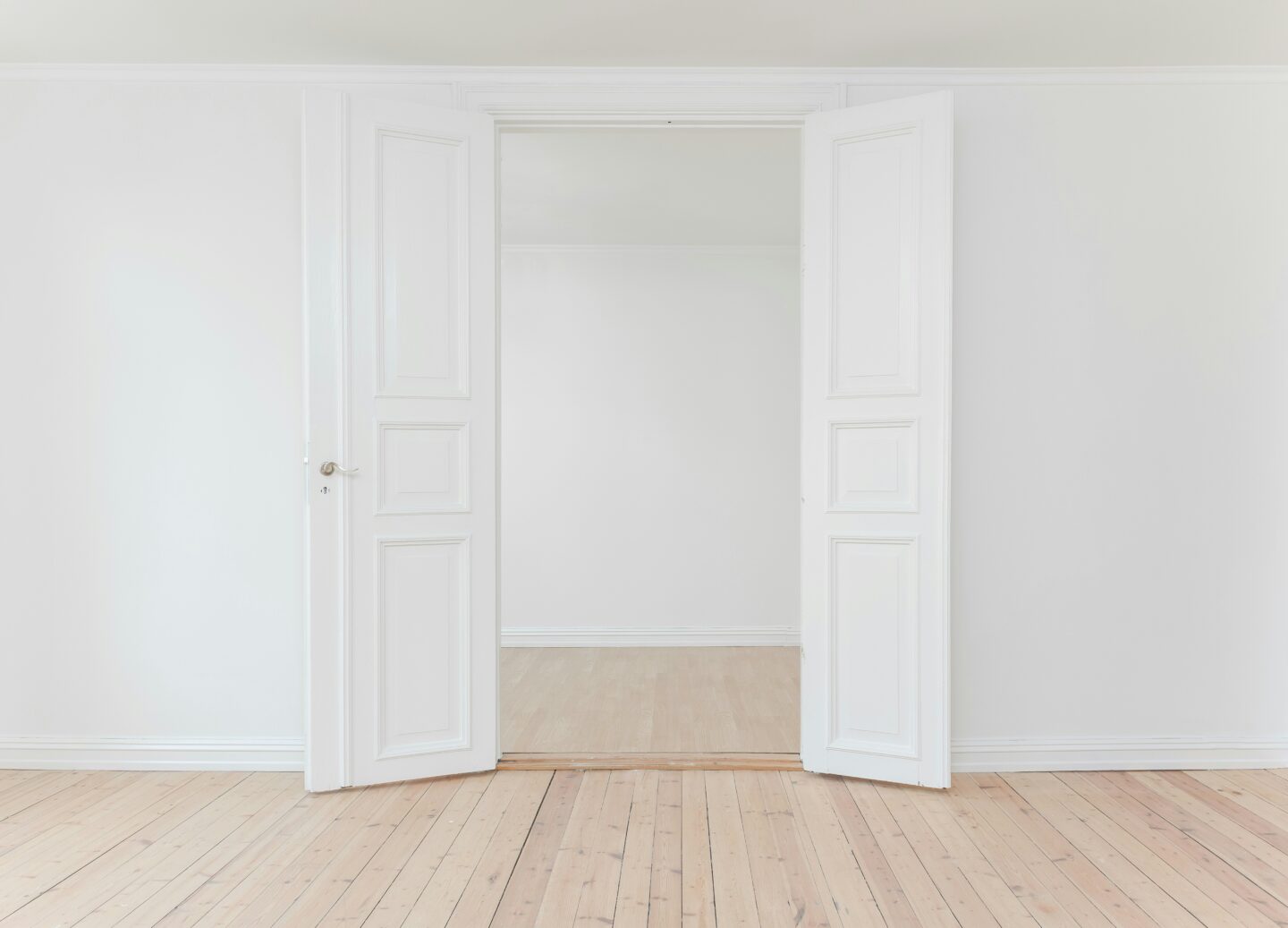
If you live in a smaller home, then you might find that the smallest rooms within that small home can feel a little claustrophobic while the door is open. Typically, these smaller rooms have a door designed to swing into them, meaning that when the door is in use, a large tract of floor space is unavailable.
Of course, this isn’t ideal: that floor space will usually have to be kept empty to allow the door to open, leading to a reduction in the room’s utility. Let’s discuss some great options to ensure that any door doesn’t take up too much space within your home.
Bi-fold doors
Bi-fold doors are a great way to ensure that there is plenty of space in a room, as they allow you to ensure that the door becomes smaller once it’s been opened.
Essentially, the concept of them is simple – a regular door panel is split in two, and hinges are installed in the middle. This means that when the door is opened, it can fold down on itself, leading to a door that doesn’t stick into the room that you’re accessing as much. On the contrary, when the door is closed, the two panels press together, ensuring their structural integrity.
This can be a great choice for rooms that will be largely used for storage: keeping a door out of the way of your items allows for a greater amount of storage space.
Glazed doors
Glazed doors are often considered to be most useful when they’re selected as part of a small room designed to be in use quite often. The reason for this is that an opaque door can make a small box room feel extremely claustrophobic, with the comparison to a cell or a cupboard being self-evident.
Internal glass doors, however, allow the occupant of the room to see beyond the small amount of space that they have. This creates the feeling that their actual assigned space is much greater and includes a wider variety of people and things.
If you opt for glass doors, try to strike a balance between privacy and light flow. While it’s nice to see natural light entering a room (especially one that you’re in), an occupant doesn’t want to feel as though they’re being observed. A great solution to this issue can be partially obscured glass: frosted glass, for instance, allows light to pass through easily, but does not allow for an audience.
Sliding and pocket doors
Sliding doors are a wonderful way to prevent the issue of doors protruding into rooms. To be sure that they’re working efficiently for a home, ensure that their rail doesn’t present a trip hazard or a noise issue. Some modern sliding doors don’t actually need rails at ground level, instead simply requiring a small wheel or bearing that allows the door to move more freely. The track to keep the door in place, however, sits above the door frame itself, and is typically hidden.
It may also be worth considering pocket doors, though these can be expensive. Pocket doors are sliding doors that retract into the wall that they’re a passage through – this ability to make a door disappear can be a great boon in a particularly small space.
Pocket doors can also provide a home with increased internal insulation capacity. While an air pocket within a wall may not provide excellent noise insulation, it can provide an impressive amount of heat insulation.
Internal doors can have a big impact on the way you interact with your home. Therefore, if you already feel like your home is on the smaller side, replacing your current doors with space-saving alternatives can allow you more room to breathe.
